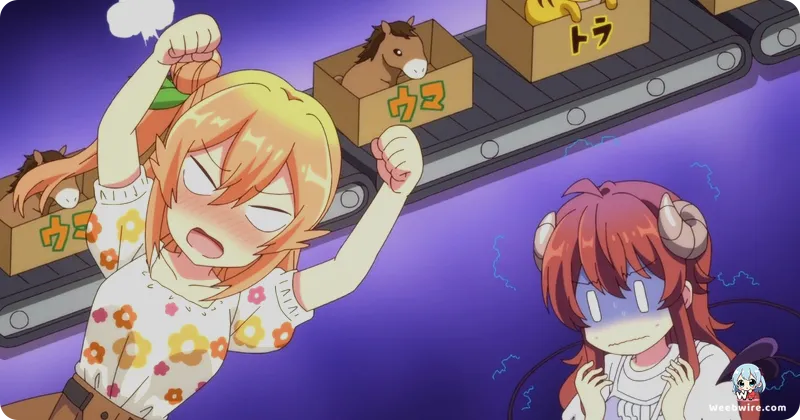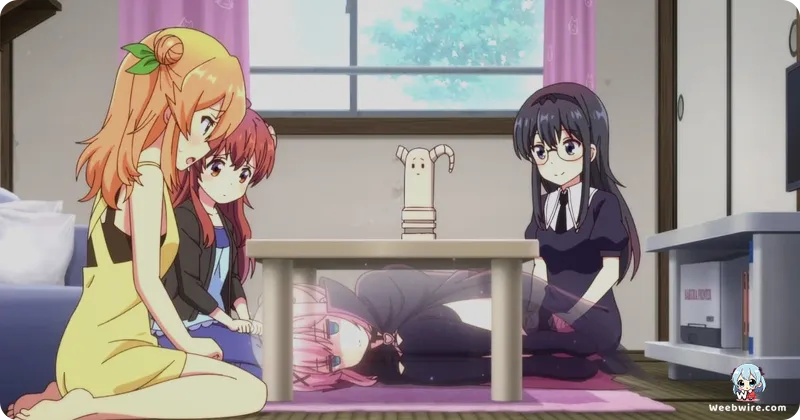The Demon Girl Next Door Season 2: How Wholesome Subversion Created a Cult Anime Hit

In the vibrant landscape of anime, The Demon Girl Next Door Season 2, also known as Machikado Mazoku 2nd Season, stands out as a truly charming and refreshing anomaly. This beloved series captivates audiences with its unique blend of comedy, fantasy, and heartwarming slice-of-life elements. It expertly subverts traditional magical girl tropes, choosing instead to celebrate the mundane alongside the magical. Its delightful quirks form the bedrock of its widespread appeal.
The narrative centers on Yuuko Yoshida, affectionately known as Shamiko, an ordinary high school girl who suddenly awakens as a demon. Tasked by her ancestor Lilith to defeat a magical girl and break her family's curse of poverty, Shamiko's journey takes an immediate, hilarious turn. Her first encounter with the formidable Momo Chiyoda evolves not into a fierce battle, but into a surprisingly wholesome and utterly endearing friendship. This clever subversion of the hero-versus-villain dynamic is a key highlight, prioritizing a supportive, if comically one-sided, bond.
Much of the humor arises from Shamiko's physical frailty; despite being a demon, she frequently collapses from exertion, often needing Momo to carry her. Her tiny horns and expressive tail playfully highlight her 'demon in training' status. Conversely, the powerful Momo consistently restrains her immense abilities, her stoic demeanor concealing a deep, protective affection for Shamiko. This dynamic, where the potent 'hero' becomes the 'villain's' guardian, offers a refreshing narrative twist. Further comedic layers are added by Shamiko's ancestral guide, Lilith, whose advice from a statue is invariably outdated or mischievous, often worsening Shamiko's predicaments.

J.C.Staff, the animation studio, deserves immense praise for their expert adaptation of Izumo Ito's 4-panel manga. They flawlessly translated its rapid-fire gags and visual humor, utilizing exaggerated expressions and precise comedic timing, with subtle visual details enriching the viewing experience. Beyond the fantastical premise, the show's grounding in relatable slice-of-life situations amplifies its comedic impact. Humor stems from Shamiko's everyday struggles like part-time jobs or grocery shopping, juxtaposing the extraordinary with the ordinary to make her predicaments universally relatable. The Yoshida family's perpetual poverty curse, rather than a tragedy, serves as a consistent comedic backdrop, fueling many of Shamiko's schemes.
The Demon Girl Next Door has garnered overwhelmingly positive fan reception, cementing its status as a beloved cult hit. Viewers praise its wholesome comedy, genuine character warmth, and comforting feel-good nature. The series notably avoids common anime tropes, focusing instead on pure, character-driven humor and heartwarming interactions. In essence, The Demon Girl Next Door Season 2 is a treasure trove of delightful oddities, proving that compelling stories flourish in the mundane and through unexpectedly wholesome friendships.
Credits
The Demon Girl Next Door Season 2
Author
Izumo Ito
Cover Art
Izumo Ito
Studio
J.C.Staff
Publisher
Houbunsha
Producers





